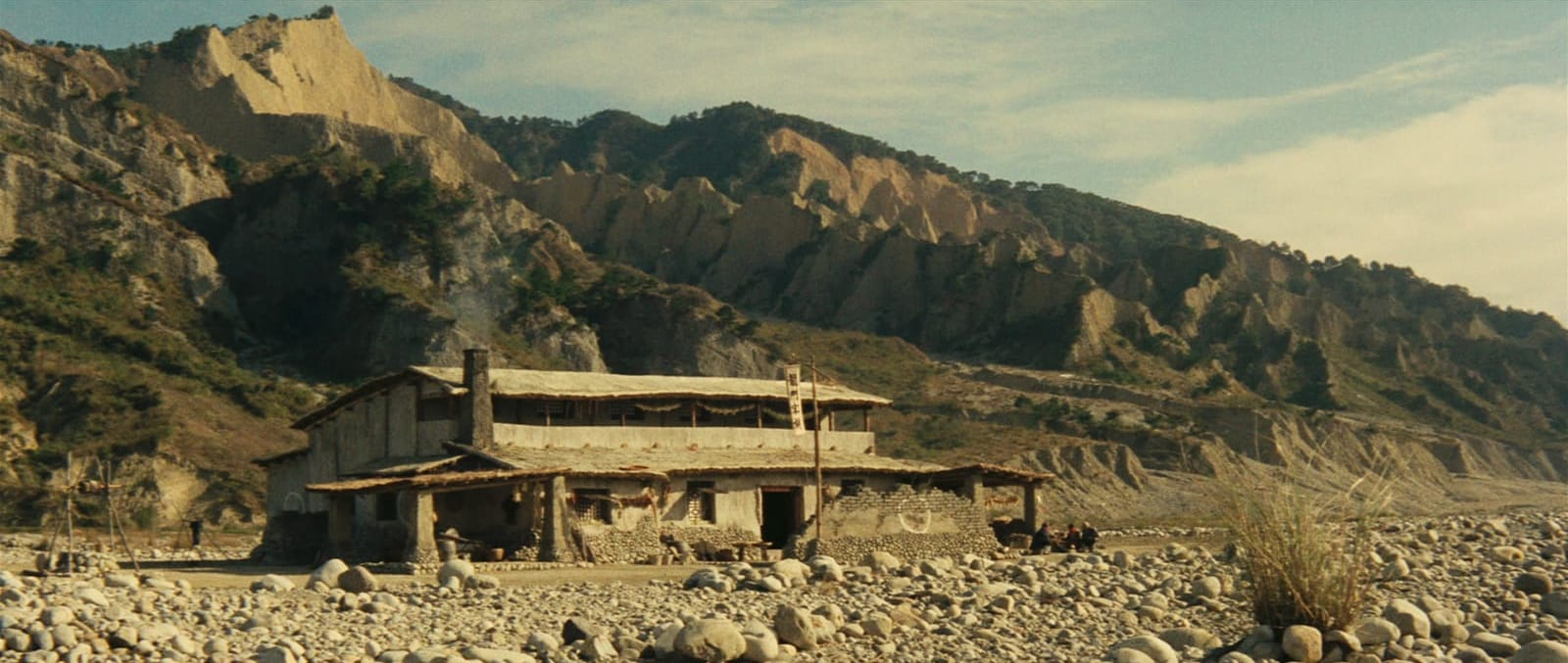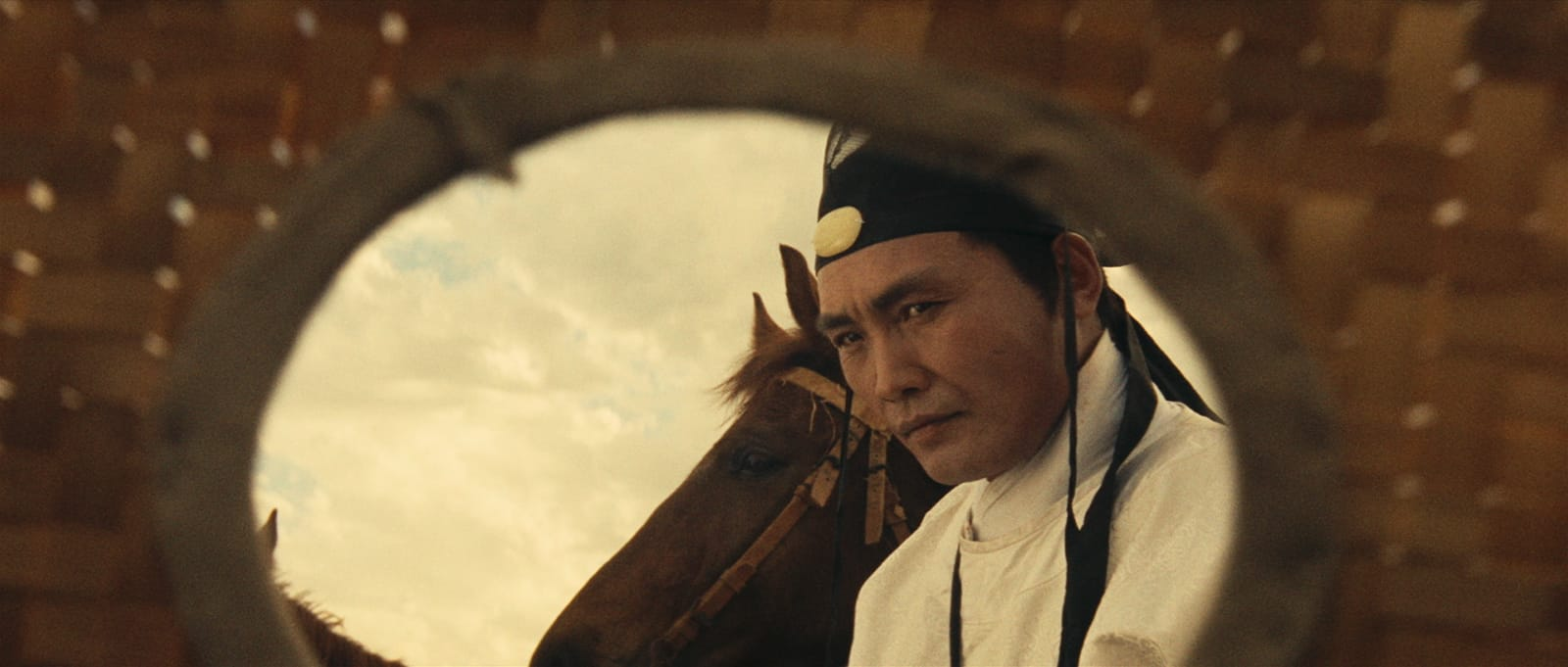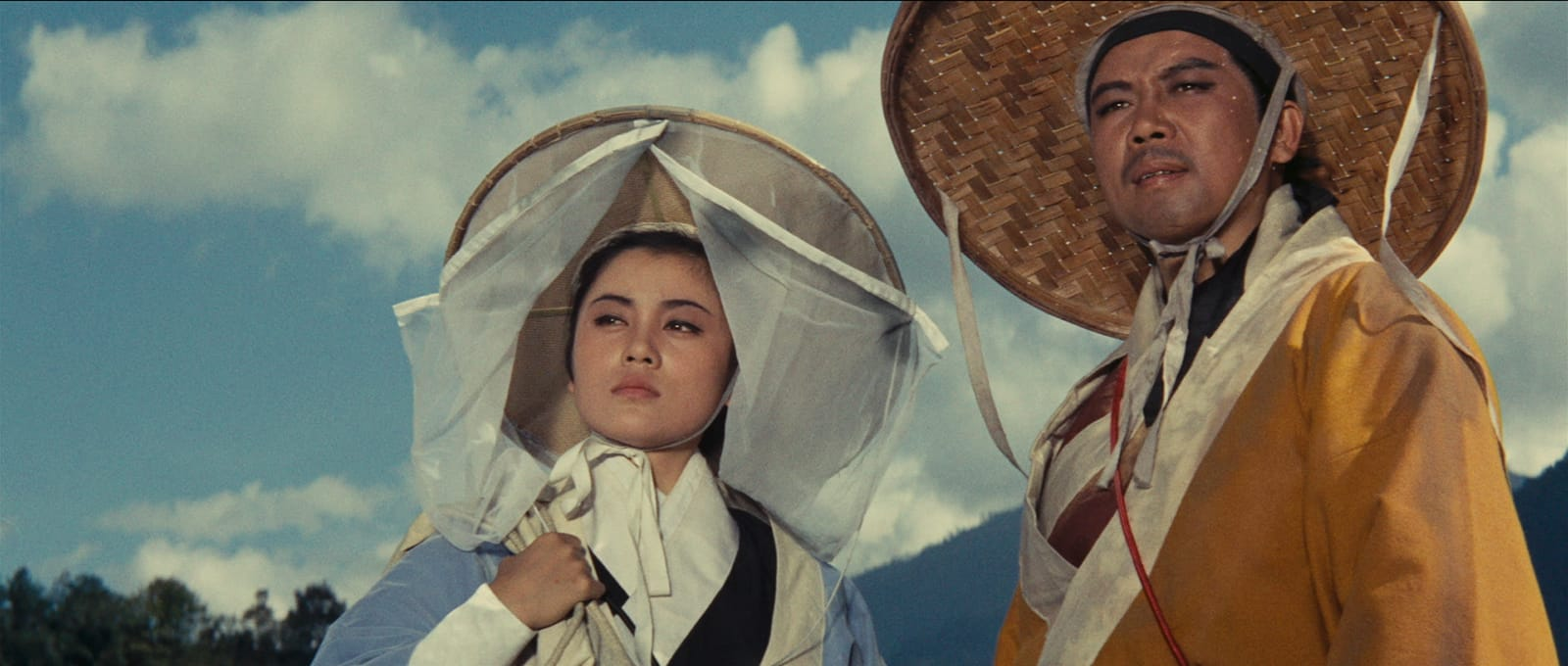Dragon Inn: Poised for Battle

A way station in the middle of an empty desert, the Dragon Gate Inn isn’t much to look at. Its thatched roof and mud-brick structure blend into the miles of rocky terrain surrounding it, and the chili peppers and corn husks hanging from its walls are the only meager gestures toward color. The interior is sparse but orderly, with a few wooden tables and a staircase leading up to rooms on the narrow second floor. Located at some unspecified remote point on the northern Chinese border, it’s a place where nothing much should ever happen. And yet, the first time it appears in King Hu’s 1967 Dragon Inn, a band of mysterious men are approaching its door, boding trouble. As with the taverns in westerns and the suburban houses in slasher movies, the inn’s very plainness provides the ideal backdrop for the impending struggle between good and evil, forces that its ramshackle walls and paper windows will be helpless to keep out.

If Hu’s most widely acclaimed film—the three-hour epic A Touch of Zen, which he made four years later—is a monument to the wild outer reaches of his imagination, Dragon Inn (the names of both the inn and the film were shortened for Western release) represents his artistry at its most disciplined and distilled. A massive commercial success throughout the Chinese diaspora, the movie was Hu’s first after leaving Hong Kong for Taiwan, where he hoped to enjoy more creative freedom at Union Film. Watching Dragon Inn, you get the sense that, in order to better exercise his control, he had to first pare away all distractions, keeping his setting and story as simple as possible. By the time he moved to Taiwan, Hu was coming into his own as an artist, having already enjoyed a nearly decade-long career as an actor, screenwriter, and set decorator at the famed Shaw Brothers studio. After assisting one of the key figures at the company, Li Han-hsiang, on a number of films—including The Love Eterne, the most sublime of the Huangmei opera blockbusters that captivated Chinese-speaking audiences in the early sixties—Hu had kicked off his solo directorial career in 1965 with the war epic Sons of the Good Earth, before making his critical and commercial breakthrough a year later with Come Drink with Me.
Along with his Shaw colleague Chang Cheh (the orchestrator of such bloodbaths as 1967’s The One-Armed Swordsman), Hu went on to change the face of the venerable wuxia genre, which centers on swordplay and ancient chivalric codes—moving it away from fantasy and old-world superstition and toward a focus on credible depictions of combat. But while Chang became known for the violent machismo of his films, Hu always managed to mix in a bit of the supernatural with his rough-and-tumble realism, as in the unforgettable sight in Come Drink with Me of the heroine catching coins with a chopstick. And despite Dragon Inn’s naturalism, Hu delights here in springing surprises on the eye. In one disarming shot early in the film, he shows us how a desolate patch of earth can be suddenly activated as if it were a stage: the camera glides across a hilly landscape as swordsmen unexpectedly emerge, one after another, into the frame, their bodies locking into place to the sound of brassy percussion.

“In Hu’s films, the plasticity of the medium works in tandem with the puzzle-piece maneuverability of human figures.”







